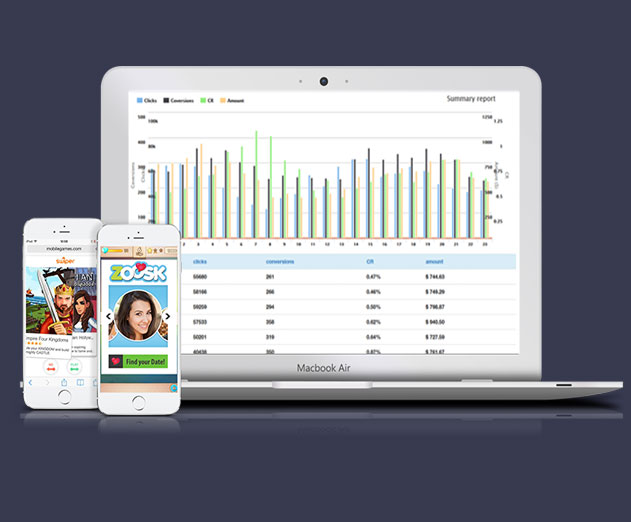Cross Channel Strategies for Mobile App Publishers
Saturday, April 11, 2015

|
Tim Koschella |
Customers connect and engage with advertisers across many channels, including email, the web, physical locations, social media networks and increasingly, in mobile apps. These channels aren't silos, and users are not channel-specific. People don't only use Facebook, or play Angry Birds, or only read online papers; they increasingly interact with brands across numerous platforms.
A single transaction may take place over a period of time across your website, mobile app, or social network, and the cross-channel experience for this hyper-connected consumer must be seamless and consistent in tone, voice, and design. Does your mobile app advertising strategy make the grade?
Setting Your Company Up for Cross-Channel Consistency
Large and small developers alike face challenges in creating a seamless cross-channel experience for users.
A company with 50 developers working across channels with separate teams for Facebook, the website, and programmatic, for example, tend to work independently of one another, even competing for budget and recognition. Consumers seeing ads across channels should feel they're having the same experience with the company, regardless of where and how they've chosen to connect.
The smaller developer, on the other hand, is apt to feel spread too thin when trying to reach consumers across a variety of channels. Budget, human resources, and time limitations can leave developers in constant catch-up mode rather than focusing on improvements.
The solution for both types of developers is a single touch point from which to manage and measure campaigns. Consistent success criteria and KPIs give a common language to teams, large or small, working across channels, to drive precise creative and targeting that resonates with users whether in-app, on-site, or elsewhere.
Identifying Your Mobile Objectives & Attributes to Measure
Setting consistent objectives and measurement attributes for the campaign as a whole and across channels drives ongoing optimizations, but how do you get started?
First, performance metrics will depend greatly on the type of company. An e-commerce store coming from the web to mobile will approach cross-channel differently than a pure-play mobile developer. In e-commerce, the goal is to extend purchasing opportunities for existing clients, from the web to mobile. Converting those customers to the mobile experience is a priority.
A game developer, on the other hand, develops exclusively for mobile, so that is the only KPI set they're looking at.
For both, though, identifying events that happen at various points in the user lifecycle is critical. Long-term KPIs inform long-term strategy, but focusing here alone means missing out on opportunities to optimize in the shorter term.
User Lifecycles
Early Lifecycle: A mobile-first or mobile-only developer should look at interaction and engagement. In the case of a game developer, this could be: Did they come back to play? Are the sessions long enough? Did they complete a game tutorial to learn more about the app?
A company coming to mobile to enhance other experiences, on the other hand, needs additional metrics to demonstrate whether the user is familiarizing themselves with the app for use when they are ready to convert with an order. Take a food delivery company for example: are existing customers registering, browsing the menu, or using store locator or other features? This tells developers that although the customer hasn't ordered yet, they're familiarizing themselves with the app.
Mid-Lifecycle: Here, developers of all kinds will focus primarily on monetization. This is where you want to see if mobile users are bringing in revenue – and to what extent.
In-app purchases, subscriptions, interactions with advertising and other direct or indirect revenue can be measured mid-lifecycle. These insights are used to begin calculating projected customer lifetime value (LTV) and to inform optimizations to drive revenue.
Long-Term Lifecycle: Like early and mid-lifecycle, long-term insights drive optimizations for engagement and revenue, but the data available to developers gets better all the time. Using the food delivery app example given here, a lack of conversion to ordering in the first month might indicate a low or non-existent CLTV. However, four orders in the first six months of app usage tells an entirely different story.
Delivering a Relevant, Engaging Mobile User Experience
Correctly segmenting your audience is key to getting the right message in front of the right user, at the right time. Users can be segmented by location, demographics, but also by characteristics like engagement level, actions taken with the app, average CLTV and more.
Test different messaging with unique calls-to-action against each audience segment. Consider the traits of each segment; for example, that food delivery app developer probably knows that people who order midday during the week are ordering from their desk at work. On evenings and weekends, it's more likely they're out with friends and on the go. Understanding user intent helps drive relevant, engaging messaging that appeals to the user in the moment.
Despite this need for consistency, keep in mind that different language and design elements play better in different markets. In Europe, a bold and vibrantly colored design may be considered too flashy. The same design, however, would appeal to segments of the Japanese market, where exaggerated imagery is the norm.
Testing offers and messaging in each user segment will show developers how users react to each message, as measured by conversion, order value, frequency and other metrics that speak to your mobile objectives.
Key Takeaways
- Mobile-first or mobile-only developers and web-first or other developers require different strategies. However, both benefit from a single platform from which to manage and measure campaigns, with consistent success criteria and KPIs across channels.
- Early lifecycle objectives and metrics drive ongoing optimizations; mid-cycle typically focuses on revenue metrics; long-term metrics enable developers a birds-eye view and more granular data on which to base tests and ongoing optimizations.
- Segmenting users into specific audiences facilitates messaging, offers and targeting based on user behaviors within the app, enhancing relevance and ultimately increasing engagement.
Read more: http://www.applift.com/
This content is made possible by a guest author, or sponsor; it is not written by and does not necessarily reflect the views of App Developer Magazine's editorial staff.

Become a subscriber of App Developer Magazine for just $5.99 a month and take advantage of all these perks.
MEMBERS GET ACCESS TO
- - Exclusive content from leaders in the industry
- - Q&A articles from industry leaders
- - Tips and tricks from the most successful developers weekly
- - Monthly issues, including all 90+ back-issues since 2012
- - Event discounts and early-bird signups
- - Gain insight from top achievers in the app store
- - Learn what tools to use, what SDK's to use, and more
Subscribe here




_cptybzmh.jpg)








